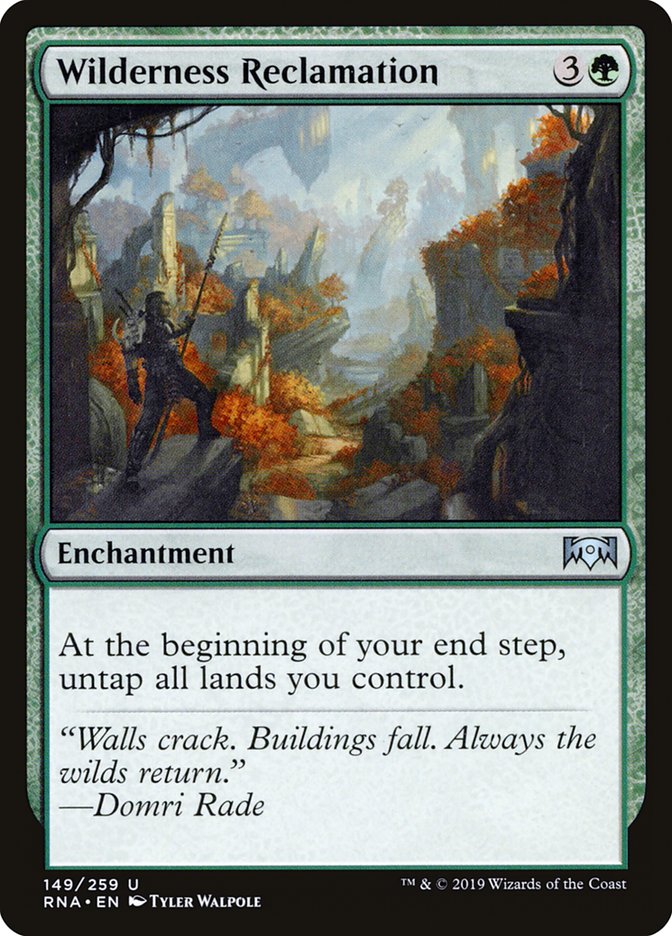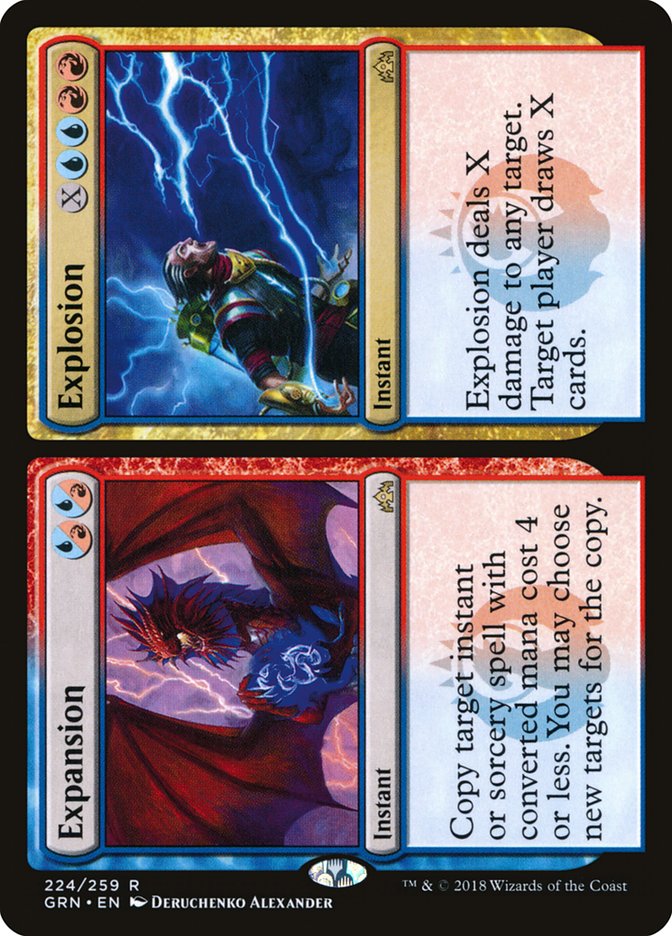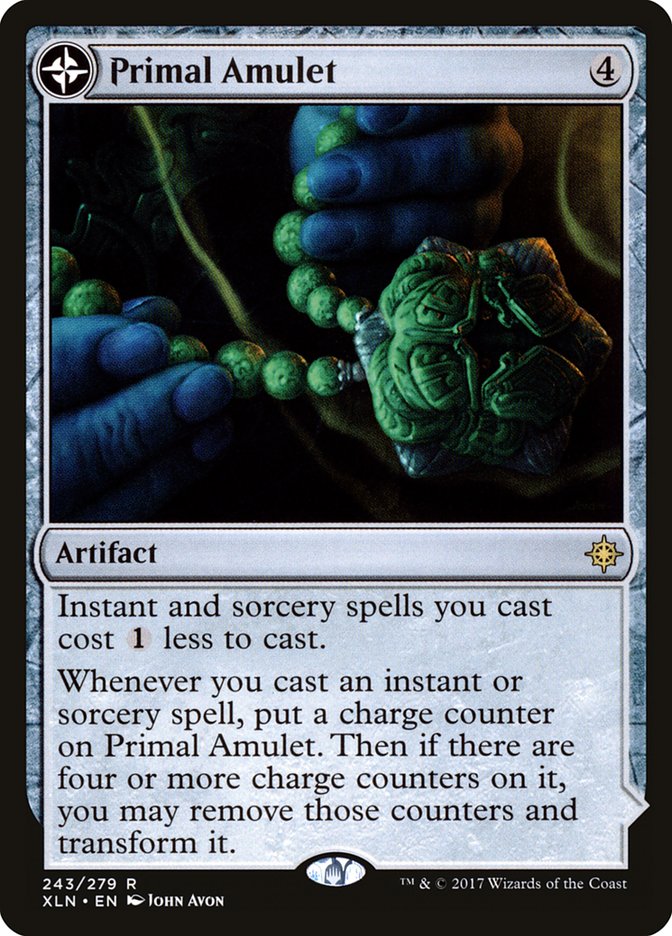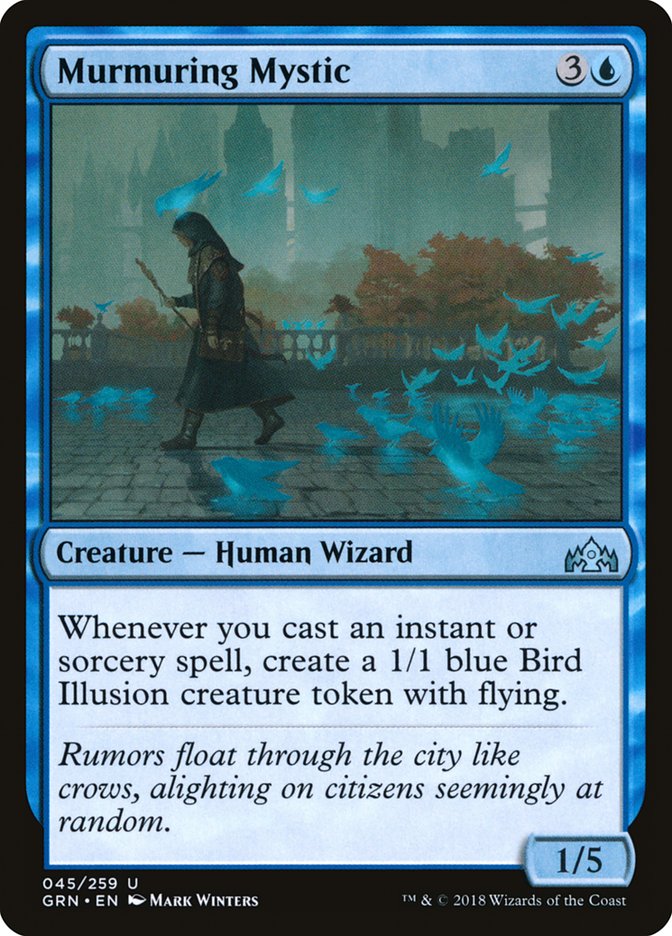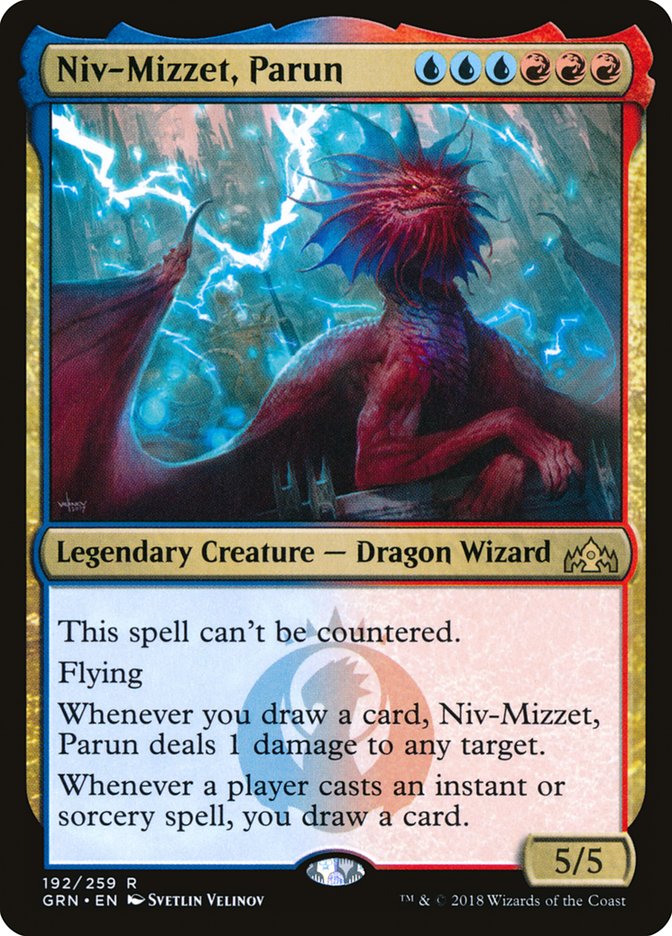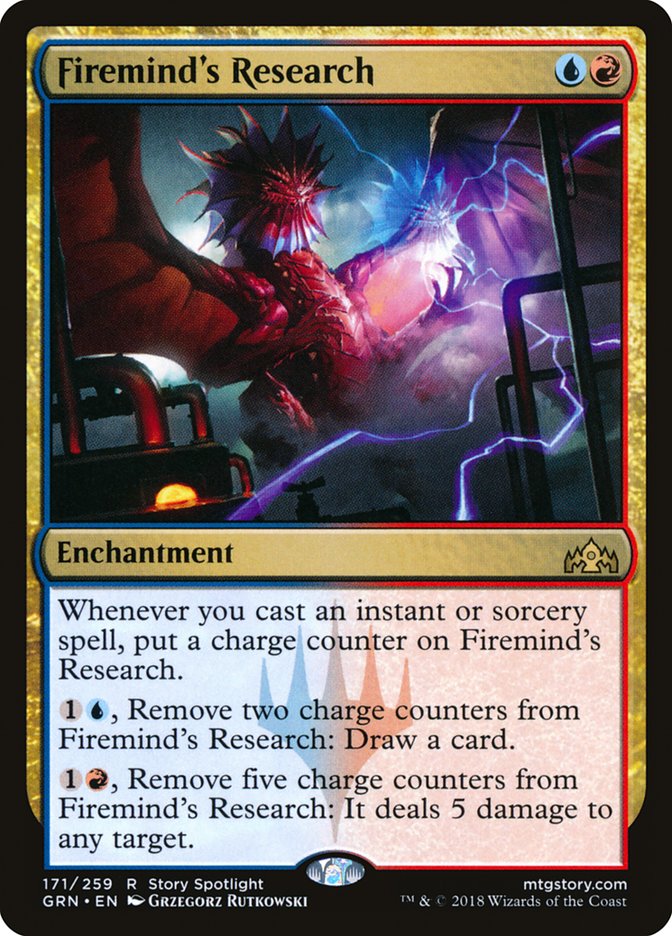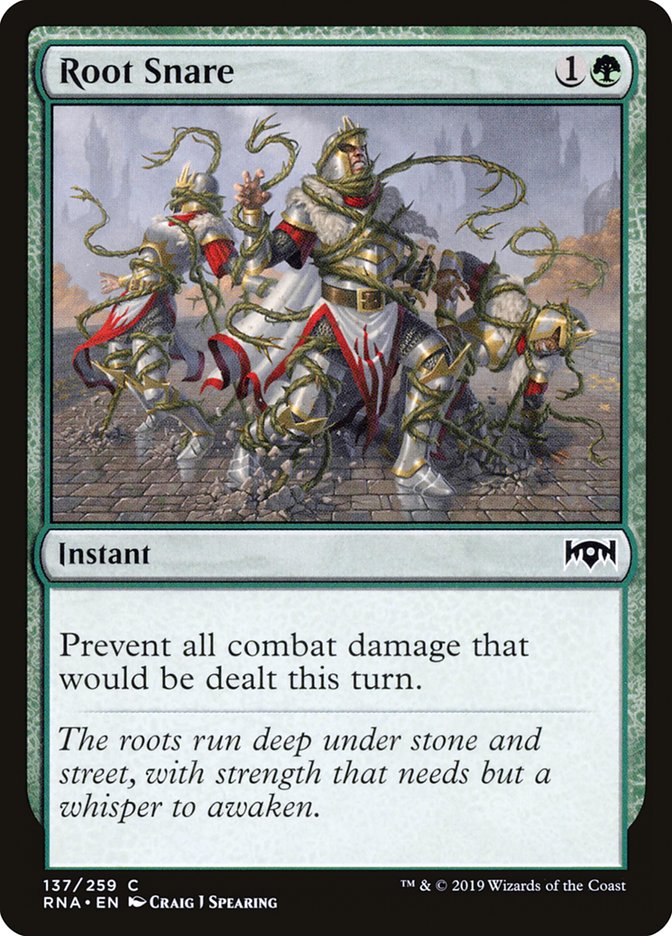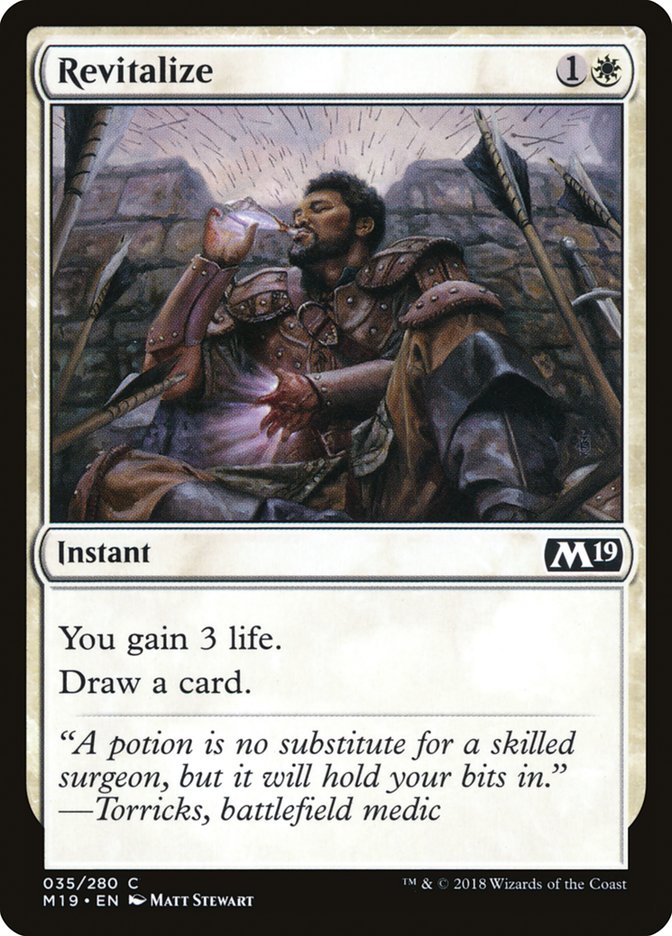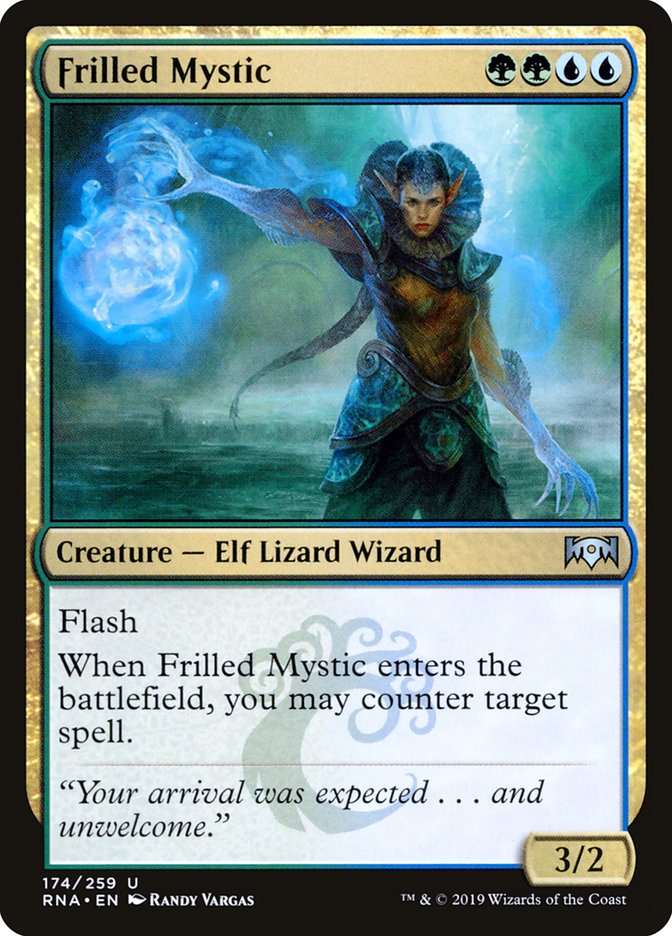Let’s get right down to brass tax. This past weekend, Wilderness
Reclamation didn’t make much of a public appearance. Outside of me having a
few cool feature matches at SCG Indianapolis, there were no copies in the
Top 8. But the Standard Classic and Magic Online MCQ (formerly known as
PTQ) was a different story entirely.
Creatures (1)
Planeswalkers (3)
Lands (24)
Spells (32)
- 1 Anticipate
- 3 Settle the Wreckage
- 3 Search for Azcanta
- 4 Revitalize
- 4 Nexus of Fate
- 4 Root Snare
- 4 Chemister's Insight
- 1 Dawn of Hope
- 4 Growth Spiral
- 4 Wilderness Reclamation
Sideboard

Planeswalkers (3)
Lands (25)
Spells (32)
- 4 Gift of Paradise
- 3 Search for Azcanta
- 2 Revitalize
- 4 Nexus of Fate
- 4 Root Snare
- 4 Chemister's Insight
- 1 Expansion
- 4 Growth Spiral
- 2 Precognitive Perception
- 4 Wilderness Reclamation
Sideboard

Creatures (4)
Lands (26)
Spells (30)
- 4 Nexus of Fate
- 2 Deafening Clarion
- 4 Guild Summit
- 4 Expansion
- 4 Circuitous Route
- 4 Growth Spiral
- 4 Wilderness Reclamation
- 4 Gates Ablaze
Sideboard

Planeswalkers (3)
Lands (25)
Spells (32)
- 4 Gift of Paradise
- 3 Search for Azcanta
- 2 Revitalize
- 4 Nexus of Fate
- 4 Root Snare
- 4 Chemister's Insight
- 2 Expansion
- 4 Growth Spiral
- 1 Precognitive Perception
- 4 Wilderness Reclamation
Sideboard

There’s a reason Wilderness Reclamation is setting off my alarm bells. The
first time you cast the card and get to untap your lands, you realize it’s
actually free. The opportunity cost of playing Wilderness Reclamation is
that your opponent can kill it or counter it to negate the four mana you
invested into it. After that, it effectively doubles your mana every turn
so long as you’re casting things at instant speed.
When I first started brewing with Wilderness Reclamation, the obvious start
was Nexus of Fate. When you can generate a bunch of mana and you need to
cast instants, Nexus of Fate is a no-brainer. But when you start to look at
sequences involving Teferi, Hero of Dominaria alongside Wilderness
Reclamation, you start to see lines that generate exactly seven mana. And
when you start forcing your opponent to play around Settle the Wreckage,
you buy yourself enough time to assemble Wilderness Reclamation plus one of
your engines.
My gut told me that fog effects were bad. Instead, I wanted to play removal
like Shock, Lightning Strike, and Lava Coil to contain creatures until I
could combo-kill them with Explosion. And since the front half, Expansion,
was so good by itself, I figured Explosion was the best win condition for
Wilderness Reclamation. Casting an Explosion for X=6 on the fifth turn by
only casting Wilderness Reclamation and Explosion is pretty disgusting.
It’s what drew me to the color combination in the first place.
But what I found playing fourteen matches this weekend was that engines
like Wilderness Reclamation don’t need a lot of help. Primal Amulet, while
insanely powerful alongside Wilderness Reclamation when transformed, was
just a bit too clunky. You need to play Radical Idea, which is not a good
Magic card, for it to function. And if you draw too many copies of
Wilderness Reclamation or Primal Amulet, you’re operating a lot at sorcery
speed while not actually progressing your overall gameplan.
In the Indianapolis Open, I went 4-3 with this.
Lands (25)
Spells (35)
- 4 Shock
- 4 Opt
- 4 Primal Amulet
- 1 Blink of an Eye
- 1 Shivan Fire
- 4 Radical Idea
- 4 Chemister's Insight
- 4 Expansion
- 2 Lava Coil
- 3 Growth Spiral
- 4 Wilderness Reclamation
Sideboard

If you want to see the deck in action, you can check out some of the
sweeter games here.
Watch SCG Tour Indianapolis
Open – Jan. 26-27 | Standard – Day 1 from SCGTour on
www.twitch.tv
The more I played with the deck, the more I started learning about the
malleable pieces inside the archetype. I would regularly sideboard out
Wilderness Reclamation and/or Primal Amulet, turning into more of a Temur
Control strategy. And at a certain point, the deck started to feel a lot
like Splinter Twin. In the first game, you have a solid gameplan that’s
difficult for your opponent to interact with. After sideboard, they get
access to a lot of pinpoint interaction that can disrupt your combo, but
you juke them by going hard on Murmuring Mystic and Niv-Mizzet, Parun.
When your opponent is guessing on whether you have creatures in your deck,
chances are they’re going to lean toward against. That’s where both
Murmuring Mystic and Niv-Mizzet, Parun shine. They’re so insane if left
alone for more than a turn, and particularly devastating should you ever
combine them with an active Wilderness Reclamation. Both reward you for
playing a lot of spells. One is more defensive (Murmuring Mystic) while the
other closes the game quickly (Niv-Mizzet).
The sideboard games often felt a lot easier than the pre-sideboard games,
which means that Primal Amulet just isn’t good enough. I felt a lot better
when my deck was just Growth Spiral, removal, card draw, Wilderness
Reclamation, and threats that are tough to kill. But what I should have
recognized earlier is that the games felt easier because my opponents
didn’t have much, if any, removal in their deck that could take care of
these threats.
I knew that if I played those creatures in my maindeck, there would be a
good chance I’d just be exposing myself to the likes of Vraska’s Contempt,
Ravenous Chupacabra, and even Cast Down when they would otherwise be dead
cards. I wasn’t ready for that just yet, so I decided to go another route.
Here’s what I ended up playing in the Standard Classic the next morning.
Lands (26)
Spells (34)
- 4 Shock
- 4 Opt
- 2 Blink of an Eye
- 1 Shivan Fire
- 3 Firemind's Research
- 4 Chemister's Insight
- 4 Expansion
- 4 Lava Coil
- 4 Growth Spiral
- 4 Wilderness Reclamation
Sideboard

What Went Wrong
Again, I started off strong with a 4-1 record, only to lose the next two.
Again, I thought I needed another engine, when in reality I just need a
card, or cards, that are powerful enough on their own to help me catch up
when I’m behind or push me super far ahead when I’m at an advantage. I keep
trying to play cards that are only good when I have an active Wilderness
Reclamation when I should be trying to play cards that are solid at all
stages of the game, and then turbo-charged when I have an active Wilderness
Reclamation.
Expansion//Explosion is a perfect example of that. Firemind’s Research is a
perfect example of the opposite. It’s a bit too mana-intensive, and was
never all that good even when I did get it going. I only had a few games
where it did much of anything, as I rarely ran out of stuff to do thanks to
both Chemister’s Insight and Explosion.
I also found myself losing games by running out of win conditions against
control decks in the first game. If they’re smart and just use their
counterspells on Explosion, there’s a very good chance they deck me. It
happened in the sixth round of the Classic. And one of the sideboard games
had me losing to Thief of Sanity and missing land drops.
What Went Right
I found my deck functioning a lot more like a control deck and less like a
combo deck until I was ready to kill my opponent. I would regularly need
two copies of Wilderness Reclamation plus an Explosion to actually get the
job done, but that wasn’t hard. I was constantly digging through my deck,
killing creatures, and ramping up a bit thanks to Growth Spiral.
Overall, I felt like my deck was giving me enough time to set everything
up. When I won, it was because everything fell into place. When I lost, it
felt like my opponent’s deck was just better than mine. Too many
counterspells, Mortify to kill my Wilderness Reclamation in the wrong spot,
or just a fast clock that I wasn’t able to race. The burn-heavy versions of
Mono-Red were a bit tougher than I expected, forcing me to play very
aggressive when I wasn’t necessarily set up to combo off. And without some
sort of life-gain effect, there’s a good chance I’m just not set up to do
much about it.
Spell Pierce was quite good after sideboard, both against control, opposing
Wilderness Reclamations, and Mono-Red. With them focusing more on burn
cards like Skewer the Critics and Risk Factor, Spell Pierce saved my life
on multiple occasions throughout the tournament. It was the perfect
complement to Negate to help me win counter wars, and often caught my
opponent off guard.
Something Old, New, Broken, and Blue
In order to move forward, we must go back a bit. At this point, most people
aren’t on the same train as me. Nexus of Fate has people feeling powerful,
and their opponents feeling like the card should be banned. I’m inclined to
agree, but not really for power level reasons. It’s ludicrous that the
(only foil) box-topper constantly requires tournament legal proxies issued
by the head judge. They’re straight up marked cards, and no one really
seems to care. Nexus of Fate also just straight up breaks Magic Arena. Just
a few nights ago, Shahar Shenhar’s opponent demonstrated just how dumb the
card can be by looping it for 90 minutes straight.
Watch Two Time World
Champion Streaming MTG Arena from shahar_shenhar on www.twitch.tv
Regardless of what you think about Nexus of Fate, we can still play it in
tournaments, and there’s a good chance I’m just wrong about
Expansion//Explosion being the best thing you can do with Wilderness
Reclamation.
Creatures (1)
Planeswalkers (3)
Lands (24)
Spells (32)
- 1 Anticipate
- 3 Settle the Wreckage
- 3 Search for Azcanta
- 4 Revitalize
- 4 Nexus of Fate
- 4 Root Snare
- 4 Chemister's Insight
- 1 Dawn of Hope
- 4 Growth Spiral
- 4 Wilderness Reclamation
Sideboard

As we move into the digital era of Magic, week one decklists become more
and more advanced. One copy of Dawn of Hope alongside Wilderness
Reclamation might look innocuous, but I can assure you it becomes insane in
just a short period of time. When people first brought up Dawn of Hope as a
win condition in Bant Nexus decks, I shrugged it off because I felt that it
costs too much mana to use. But Wilderness Reclamation changes everything.
The first time my opponent cast Dawn of Hope with an active Wilderness
Reclamation, I was done for. So many creatures in such a short amount of
time, all with the ability to draw a bunch of cards should I run them out
of resources.
I talked a little about Root Snare last week, and how I thought it might
end up making Wilderness Reclamation overpowered. It can buy you so much
time, and protect your Teferi, Hero of Dominaria from the most common way
of interacting with planeswalkers. But again, I very much dislike fog
effects, so I’m still fighting it. But at this point, I don’t know if I can
anymore. With decks putting up a lot of pressure in the first five or six
turns, making sure you get that crucial untap step is key in the first
game. Then, after sideboard, feel free to cut all the fogs in virtually
every matchup. It’s just one of the best things you can do to protect
yourself and your Teferi in the first game.
Removal is nice and all, but have you tried gaining life and cycling
through your deck? Revitalize is quite annoying to play against as a red
mage, as the lifegain effectively counters one of their burn spells while
drawing a card. I constantly find myself at the mercy of the top card of
the red deck, and boy let me tell you that it isn’t kind. While Revitalize
doesn’t really “do” anything, there’s a very good reason it keeps showing
up in these decks. When your opponent can’t actually attack you anymore
thanks to Root Snare, one of the easiest ways for them to kill you is to
burn you out. Revitalize might not seem like it does a lot, but I’m
positive it does more than you think.
Frilled Mystic and a Creature-Based Sideboard
You put your opponent under the gun by casting Wilderness Reclamation,
effectively walking them into whatever defenses you have. If they don’t
attack you, you get to cast Chemister’s Insight and start digging through
your deck. Eventually, they’re going to die to all the excess mana
generation and infinite extra turns. If they do attack you, you get to hit
them with Settle the Wreckage.
But against decks that don’t use the attack step much, cards like Frilled
Mystic are exceptional. Wilderness Reclamation puts them under that same
pressure, but you also get to hit them with the exploit.
Frilled Mystic might be the most underrated card from Ravnica Allegiance. It saw a little play in testing, but
ultimately kept feeling like it didn’t have a big enough impact, or that
the opponent could easily play around it. But holy hell, let me tell you,
Frilled Mystic is absolutely disgusting with Wilderness Reclamation.
People keep trying to use Frilled Mystic in beatdown decks that don’t have
any other instant-speed cards. It’s telegraphing, and people can usually
play around it easily. Or, at the very least, they can mitigate the
effects. That’s a major downside of playing Frilled Mystic as your only
instant-speed card with a significant impact. But luckily, Wilderness
Reclamation encourages you to play all your stuff at instant-speed. Do you
know how hard it is to play around both Frilled Mystic, Chemister’s
Insight, and Settle the Wreckage? It just gets worse and worse as the game
progresses.
The goal for cards like Frilled Mystic is to get a good use out of the
body. As a beatdown or tempo deck, having that body is important for
helping turn the corner and close games. But it’s significantly more
difficult to use something like Frilled Mystic in a control deck because
putting that body to good use is a bit more challenging.
Is it possible that we can use the body of Frilled Mystic simply as a
method of blocking to buy us more time? If that’s the case, is it worth
building your Wilderness Reclamation deck around?
Creatures (7)
Lands (26)
Spells (27)
- 4 Shock
- 2 Syncopate
- 1 Blink of an Eye
- 4 Sinister Sabotage
- 4 Chemister's Insight
- 4 Expansion
- 4 Growth Spiral
- 4 Wilderness Reclamation
Sideboard

Here we’re trying to leverage the body of Frilled Mystic to buy us time
against aggressive decks, but we can turn on a dime against control and
steal games. Frilled Mystic also gives you a way to interact against an
opposing Wilderness Reclamation deck without getting absolutely destroyed
by a Negate or protective Expansion. And I should know because that exact
thing happened to me this past weekend.
As a fleshed-out archetype, Temur Reclamation still has a way to go. We
need to explore being more controlling and less of a combo deck. We need to
see if having some number of creatures in our deck is worthwhile, even if
they are prone to dying. We need to stretch the limits of what Wilderness
Reclamation can do. We need to continue pushing it to its limits to see if
it’s as broken as I think it is.
“But why?”
That’s the question people keep asking me. The only response I’ve been able
to muster so far that accurately projects my feelings on the card:
“Have you cast it yet?”
Because in that moment when you first cast Wilderness Reclamation, you’ll
understand what I’m talking about. You’ll empathize with me struggling to
bring to life all these ideas and thoughts that have been running through
my head for weeks now. But I’m not the only one brewing. Before we go, I’ll
leave you with some of my favorites over the last week!
Lands (25)
Spells (35)
- 3 Opt
- 2 Syncopate
- 1 Negate
- 3 Lightning Strike
- 3 Star of Extinction
- 2 Search for Azcanta
- 4 Sinister Sabotage
- 3 Chemister's Insight
- 4 Expansion
- 4 Growth Spiral
- 2 Precognitive Perception
- 4 Wilderness Reclamation
Sideboard

Creatures (8)
Planeswalkers (4)
Lands (25)
Spells (23)



